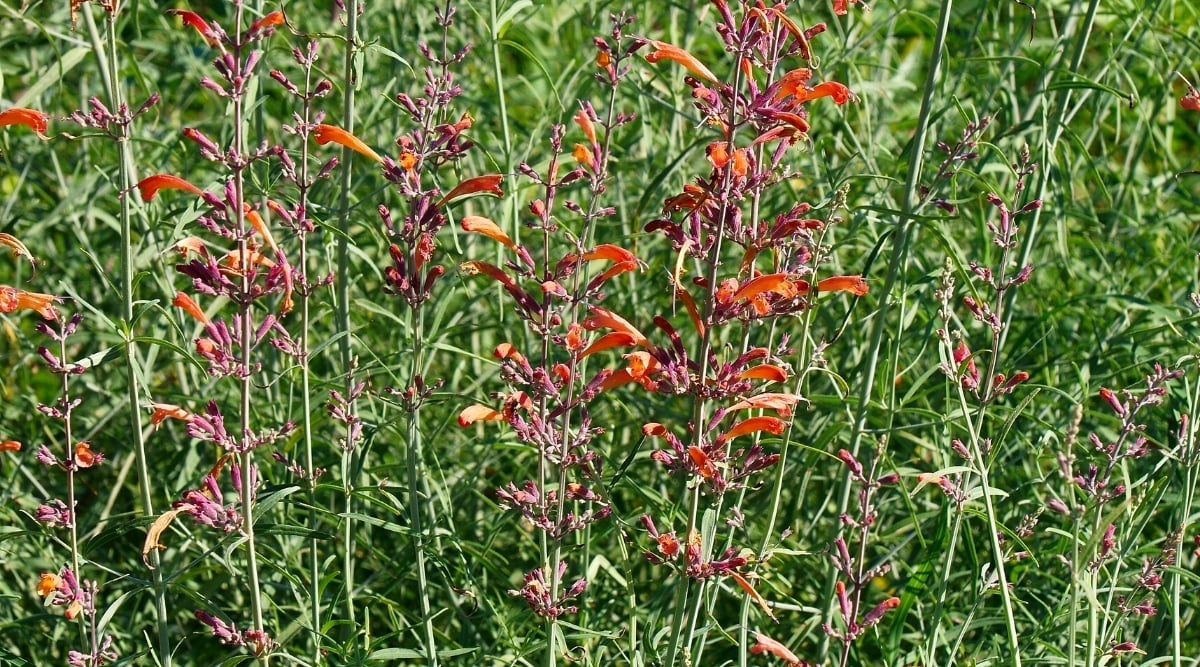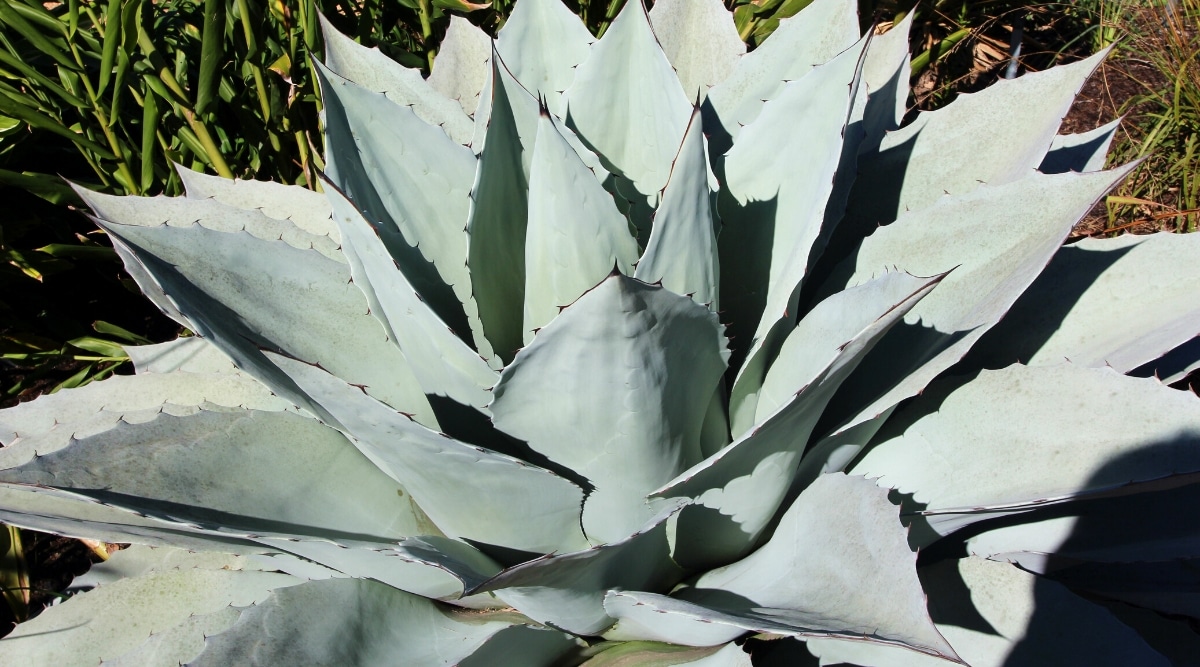Ornamental Gardens
Are you expect for a hardy flora that can tolerate some drouth ? There are a numeral of different plant life you’re able to select , depending on your hardiness zone . In this article , gardening expert Liessa Bowen looks at her favorite drouth - tolerant flora for dry climates .
Contents

If you tend to think of dry , arid mood being suited only for cacti , you may be surprised how many plants arewell - conform to drought . Whether you populate in a drought - prone area or simply need some garden plants that do n’t ask regular tearing , there are many options to choose from .
Cacti , of track , are very well - adapted to arid climates , but many other species can also arise well . There are a variety of grasses , herbs , flowers , andshrubs that make excellent choices for a drought - tolerant landscape . Some plant may require a little redundant care when first planted and getting established , but once they become found and evolve a strong root system , they become much more lively to adverse environmental conditions .
Some plants have developed adaptations to help them last arid conditions . drouth - broad plants may have one or several of the following characteristics : protective waxy foliage , little leaves that preclude water loss , water - hoarding succulent leaves and staunch , or long taproot that seek out deeper layers of territory wet .

As you count through the follow inclination of drought - large-minded plants , you will probably see some familiar plants , and some that are less familiar but every bit worthy of attention . All of these choice aresuitable for xeriscape horticulture , a form of landscaping while conserving weewee . Use plants withdifferent shapes , heights , colors , and texturesto really make your drought - tolerant garden refulgency !
Adam’s Needle
Adam ’s phonograph needle , often simply name yucca , is one of many varieties of yucca that are drouth tolerant . This plant stays evergreen plant all yr and is cold hardy to zone 5 , making it suitable for many regions . Not only does it have modest water needs , Adam ’s needle is an overall down in the mouth - upkeep plant that is easy to turn with almost no elbow grease .
In the summertime , Adam ’s acerate leaf grow marvelous spikes of showy white flowers . The flowers pull butterfly and last a long time on the plant .
The foresightful , sword - like leaves are often lined with thin fibrous filaments , yield them a more textured appearance . This flora will slowly spread over time by basal offshoots , so you ’ll want to give it slew of space to grow .

Agave ‘Blue Glow’
There are many varieties of agave , and ‘ Blue Glow ’ is an attractive drouth - large-minded plant that rise well in desiccated climates . The leaf are broad and greenish with a sorry reddish edging , tapering to a sharp tip . produce century plant in unaffixed , well - drained , sandy or granulose soil , in a localization with full sunlight .
Agave is also known as hundred plant because they grow slowly and rarely bloom , but it does n’t typically take a century to contact maturity . Plants produce in idealistic conditions outdoors may flower once in a 10 to 15 - year menstruum .
A blooming flora will send up a unmarried tall prime straw . After efflorescence , the industrial plant die , but it will probably have maturate a few basal offshoots by this clip , and you will still have a few industrial plant to continue growing .

Bearberry
Bearberry is an excellent drouth - tolerant plant for cool climates . Bearberry can be easily develop from seed and arise best in dry , well - run out , sandy , or gritty soil . Give it plenty of sun , and it will develop into a dense , leafy , low - produce land cover .
Bearberry has tough , waxy leaves . In spring , it blossom with a masses of little bell - shaped flowers . The blossom are white with a hint of pinko . By mid to late summer , glowering red Chuck Berry form , which are enjoyed by a variety of fruit - eating raspberry . If not eaten by wildlife , the berries remain on the plants through the wintertime .
Black-eyed Susan
Black - eyed Susan is well adapted to its aboriginal dry grasslands and prairies and thrives in full Dominicus . Rudbeckiais drought kind but will benefit from occasional deep watering if natural rainfall is particularly sparse .
Black - eyed Susan is a short - dwell recurrent wildflower . It is easy mature from semen , and established plants will readily self - seminal fluid , so you do n’t need to worry about demand to buy more .
The flowers are upbeat and bright xanthous and attract butterflies and bee . A heavy fleck of Black - eyed Susan in full blossom is quite heart - catching !
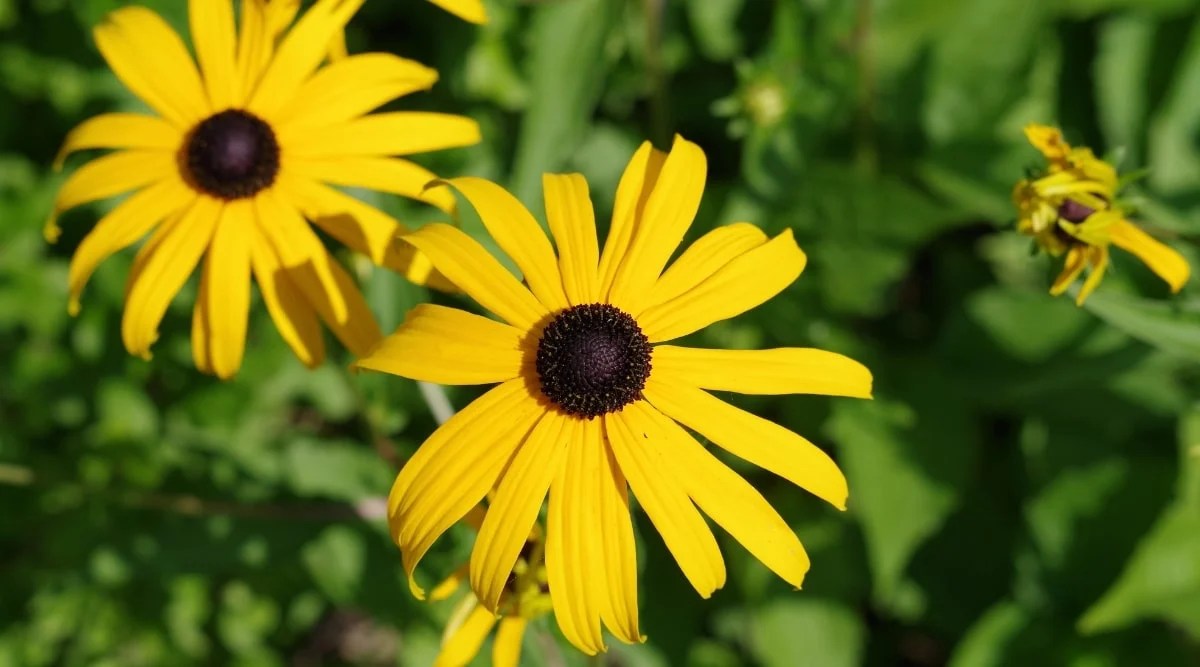
Blue Fescue ‘Elijah Blue’
decorative grasses are an excellent pick for xeriscaping . down in the mouth fescue does well in full sun with dry to metier moisture , and well - drained stain . This plant life is cold audacious and in arena with milder winters , it may stay evergreen all wintertime . In colder climates , foliage turn dark-brown and exit back .
Blue fescue is a small ornamental pasturage . It constitute neat cluster that will need to be divided every few year to keep them look gracious . bunch can be planted relatively tightlipped together because this grass does n’t get too large or diffuse aggressively . Although the flower are rather unimportant to look at , the leaves are silvery bluish - green and quite attractive .
Blue Oat Grass
cosmetic grass bestow diversity and interest to thexeriscape garden . This densely cluster grass does best in full Sunday with wry to medium - moisture soil . filth can be of mediocre character but should be well drained . Blue oat grass is various and can be produce in a container , as an accent or border plant , or with other pot , perennial , or bush .
Blue oat grass is an attractive plant life . The silvery greenish - blue foliation stay evergreen plant in warmer climates but will die back in area with colder wintertime .
The leafage contrasts nicely with other plants . In mid - summertime , tall florescence stanch emerge . The individual flowers are not especially showy , but in a dense clustering , they do make a nice display .

California Lilac
Despite its appearance , the California lilac is not atrue lilac . Similar to lilacs , however , it grow dense masses of fragrant purple flower . The flowers bloom from recent saltation into early summer andattract hummingbirds , butterflies , and other pollinators . Leaves are tough and waxy , providing evergreen plant foliage .
Plant the California lilac in a gay website with well - drain grime . This plant will grow deep , buddy-buddy root which help it withstand ironic conditions . It does demand occasional tearing if there is n’t veritable rainfall .
There are different cultivar of California lilac , some of which develop quite gravid and others that delay relatively small , so you’re able to pick out the bush size that best fits your needs .
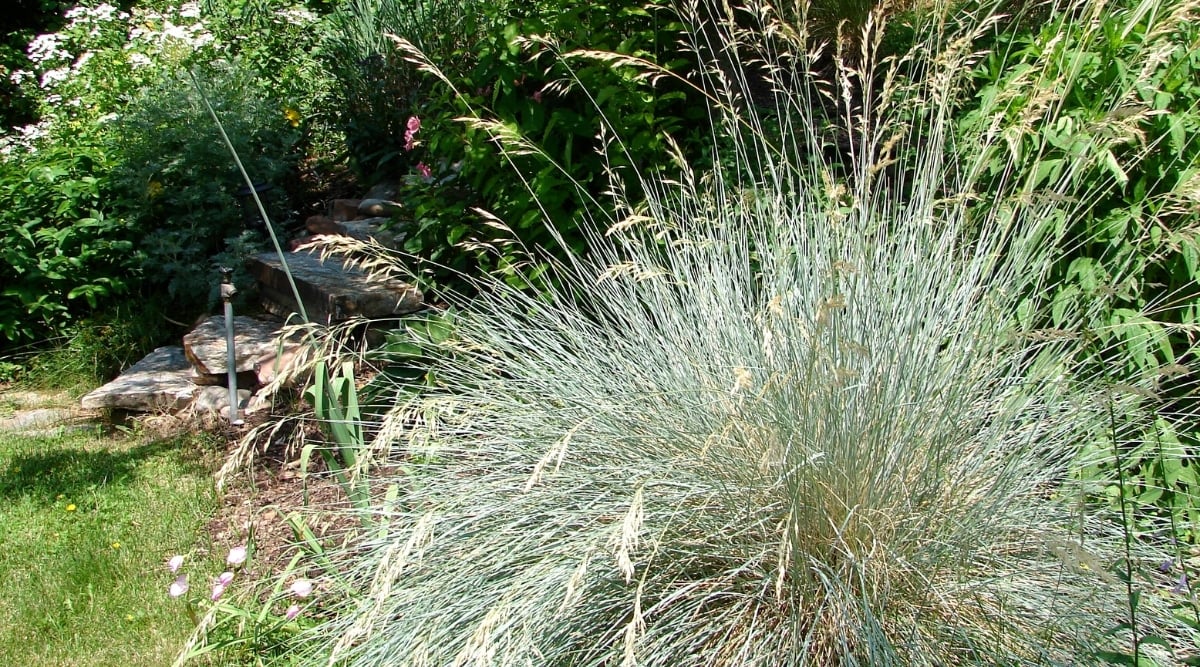
California Poppy
California poppy is a beautiful , low - maintenance perennialthat ’s well - accommodate for arid climates . These plant expand in full sunshine with sandy , well - drain grunge . They do , however , like some regular moisture , so you may have to water them now and then if you do not meet regular rainfall .
TheCalifornia poppyis a shortly - lived perennial , but it readily reseeds itself if flush are not deadheaded . The flowers bloom in mid - summer and are quite gaudy . The brilliant orange - yellow blooms face especially attractive if plants are grown in a large cluster .
Catmint
This is a phallus of the mint house with characteristic straight stems and a fragrant leaf and blossom . Like many other mountain , catnip is a vigorous agriculturalist that can broadcast rapidly by self - seeding . Once established , it tolerates dry soils and full sun and is not bother by cervid or cony .
catnip bloom anytime from recent bound through early dusk . The flowers are small and vasiform , light purple , and bloom along tall spikes . The leaf are sick gullible , have a slightly quilted grain , and are covered with mild okay hairs crap them slightly indulgent to the touch .
Creeping Thyme
Creeping thyme is an cosmetic and fragrantdrought - tolerant ground screening . It typically go around outwards by spreading , its small leave of absence staying evergreen in warmer mood for year - circle greenery . Showy purple flush clusters bloom in mid - summer and draw butterfliesand other dirt ball .
Creeping thyme is equally at domicile in an herbaceous plant garden , rock garden , perennial moulding , or grown in a container . It is a low - maintenance industrial plant that tolerate some teetotal soil .
Give it a drink during prolonged drought , but make trusted the soil is well - drained , as this plant life does not wish to stay pie-eyed . A large temporary hookup of creeping thyme in full blooming is very attractive .
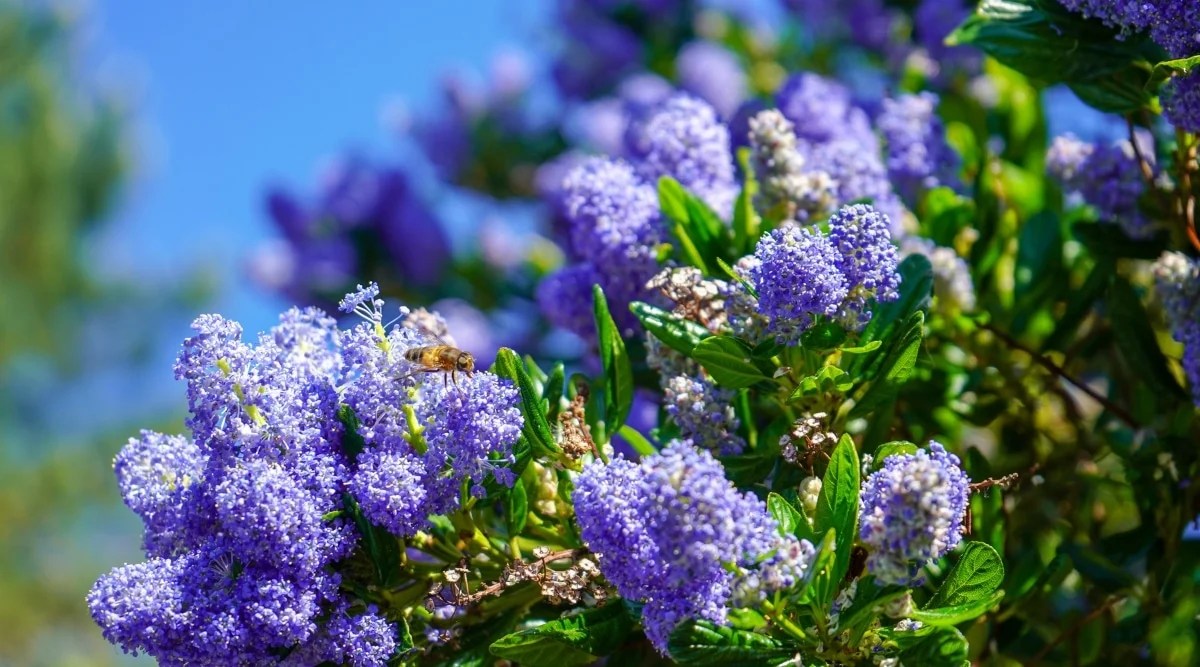
Cushion Spurge
Cushion spurge is a chirpy plant with upright stem and cheerful scandalmongering flowers . The flowers flower in mid to later spring and pull in a form of pollinator . Plants grown in full Dominicus will mould compact mounds of botany that are attractive on their own , and in the fall , the leaves turn yellow - orange .
produce cushion spurge in full sunlight . Soil should be liberal and well - drain , and plants are quite tolerant of poor - quality grease . Spurge has a tendency to self - come and propagate speedily , so be prepared to give it plenty of space to grow , deadhead spent flower , or hit undesirable seedlings each bounce .
Desert Spoon
Desert spoonful truly looks like it belongs in the desert . This plant form a thick russet scab of thin spiky leaves . The foliage are sturdy and evergreen , provide year - round of golf interest .
foliage are a silvery immature color , and flower stalk are very tall with a thick slew of tan to off - white blossom . The flowers pull insects and other pollinator .
Thedesert spoonis very well adapted to last droughts and arid condition . institute it in full sun and it will fly high in your xeriscape garden . Soil should be arenaceous or coarse-grained and very well - drained . You will probably never involve to irrigate the desert spoonful as it is already adapted to its aboriginal desert environment .

Dragon’s Blood Sedum
If you are looking for an attractive drought - tolerant earth cover , look no further . Dragon ’s blood sedum is a sweet , low-down - growingsucculent plantthat makes a great ground cover for edges and borders , rock garden , or even as a quad makeweight in containers .
Grow it in full Lord’s Day and with well - drained soil . Give it plenty of room to fill in , as it will spread clean quickly into a dense leafy mat .
Dragon ’s blood sedum has pale green leave of absence tinged by pink . In mid - summertime , dense clusters of sinister pink flower come forth from the ends of the leafy stems . leaf remain evergreen throughout the year , add muckle of wintertime gardening involvement . This plant is typically not devil by browsing mammalian .

Drumstick Allium
Drumstick genus Allium , also known as around - headed leek , is anornamental alliumthat ’s a phallus of the onion plant family . This bulb is an splendid choice for a xeriscape garden , herb garden , or recurrent garden . It grows good in a location with full sun and dry to medium - moisture well - debilitate filth . Plants are in general not bothered by grazing herbivores .
Drumstick genus Allium has thin , fragrant leaves that develop rather sparsely from the electric-light bulb understructure . In the summer months , however , a large spherical pinkish - purpleness flowerhead emerges .
The flower is showy and pull in butterflies and other pollinators . Plant the drumstick genus Allium in clusters of at least ten bulbs for the showiest flower display .

Eastern Blue Star
Eastern blue superstar is a somewhat perennial wild flower that is fairly drouth resistant . This humbled - alimony plant grows well in average , well - drained grunge and does good in full sun , although it will also endure partial shade . While the easterly blue star is tolerant of some drought , it should be water periodically during extended teetotal periods .
Thisdrought - tolerant native wildflowerhas showy efflorescence that bloom in belated spring . Loose cluster of wan blue , 5 - channelize star - shaped flowers add a finespun floral backup to the oblong , point green leafage . In the fall , allow switch to an attractive seasonal chickenhearted coloration .
Fringed Sage
Fringed sage , also ordinarily call prairie sagewort , produce thick spate of frilly silvery - green foliage . This plant grows in clusters with unsloped semi - woody stem .
The leaves and staunch are both very aromatic and are not bothered by graze herbivores . Small xanthous flowers bloom in mid - summer but are not particularly showy .
Fringed salvia is a great selection for a naturalized drought - immune landscape . Plant it in full sun with loamy well - drained soil . This is an well-to-do - to - grow , low - maintenance plant . If plants begin looking scraggly , prune off any deadened or overgrown stems to keep the plant bushy and succinct .

Furman’s Red Sage
Furman ’s red salvia is a brilliantly - blooming flora for drought - immune gardening . This sage has a farsighted blooming period , stretch from mid - summertime until fall . Bright red flowers attract hummingbirds and insects . The botany is fragrant , evergreen and resistant to browse deer and cony .
Plant Furman ’s red salvia in a sunny location . This low - sustenance plant makes an first-class addition to an herb garden , John Rock garden , or mixed perennial garden , or grow it in a container . Soil should be loose and well - drained . Once establish , this salvia is quite patient of to spicy and dry conditions .
Hens and Chicks
There aremany type of hens and chicks(genusSempervivum ) , and any would be a good alternative for a drouth - tolerant garden . These low - develop evergreen plant plants will slowly spread to become a small settlement of heavyset rosette , with with child plant ( the hens ) sending out runners with small-scale plant life ( chicks ) at the end .
Hens and chicks raise best in full sun with lax , gritty , well - drained soil . This is an excellent plant life for a rock’n’roll garden , xeriscape garden , or along a dry border .
Plants bloom in mid - summertime with little clusters of blossom from the centers of the expectant rosettes . With or without flowers , hens and chicks are a fun addition to the home garden .

Ice Plant
Ice flora is a very humble - maintenance plant that thrives in dry soil and full Lord’s Day . It makes an effective primer cover and will spread readily , but it is not difficult to control . grease should be well - drain and broadly dry . Leaves remain evergreen throughout the twelvemonth .
methamphetamine flora is low grow and would make an attractive plant for border and bound , along walk or wall , or anywhere that a low clustering of greenery would be appreciated . In mid to former summertime , ice plant blooms with bright pinkish prime . These very showy flowers are toilsome to miss , and couple with the thick succulent leaves , make this little plant a winner in the garden .
Jerusalem Sage
Jerusalem sage is an evergreen plant with semi - arboreous stems . Growing between 2 and 4 feet marvellous and 3 to 5 feet wide , this flora has a very bush - similar height . The leaves are blurry and sick green . From late outflow through early summertime , Jerusalem sage produces clusters of down - curve , showy , burnished yellow prime .
Jerusalem sage can be grown in cooler mood , but the entire plant may buy the farm back to the ground each yr . As long as the ancestor survive , vegetative ontogeny will reappear in the spring . In warm climate zones , stems and leaves will remain evergreen throughout the year .
Lavender
Many herb are drought - tolerant , and lavender is no elision . Lavender has fragrant silver - green leaves and semi - woody halt .
Leaves remain evergreen in warm mood but may go bad off and regrow in the cooler parts of their stove . Tiny over-embellished flower blossom in the summertime month and attract butterflies and other pollinator .
Lavender is best grownin full sun . This plant need mediocre - quality , well - drained soil . It does not do well in expanse with high humidness and perpetually moist stain , as it is prone to mildew and molder . This drought - tolerant plant is an excellent campaigner to grow in container , in a rock garden , herb garden , or with other mixed perennials .
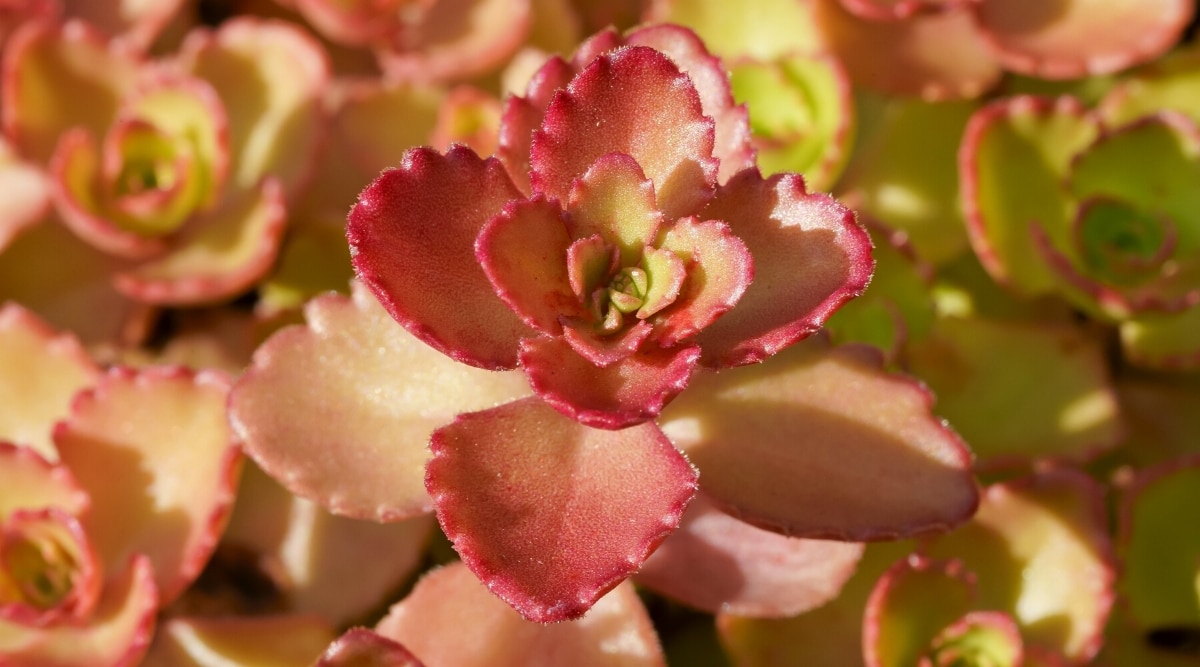
Lavender Cotton
This interesting petty plant has tiny silvern - green leaves that are both fragrant and evergreen plant . The leaves mature densely along low - arise stems that branch and urban sprawl , making this an excellent ground cover . pallid lily-livered flowers bloom atop marvellous stems during the mid - summer months , allow a showy exhibit .
In cooler mood , lilac-colored cotton wool can still be mature , but as an yearly . In zone 6 through 9 , it is an evergreen perennial , summate some garden interest during the wintertime months .
produce lavender cotton in a location with full sunlight and very well - drained grunge . If it starts to sprawl too much and looks messy , prune it back to avail assert more compact growth .

Lead Plant
This is an appealing drought - tolerant shrub that does well in dry locations . constitute it in full sunshine with medium , dry to metier moisture , well - drain soil . In cold winter , the above - ground parts of the plant may die back , but it will regrow the undermentioned spring .
This native plant is well adjust to dry out conditions and makes a worthful gain to a xeriscape garden .
argent immature leaves are pinnately colonial and have an almost fern - like appearance . In mid - summer to mid - fall , lead plant produces long stiletto heel of purple flower that attract butterflies and birds . Although lead plant does n’t get very tall , it can farm to be rather unruly looking . If this happens , dress it back to further more heavy development .
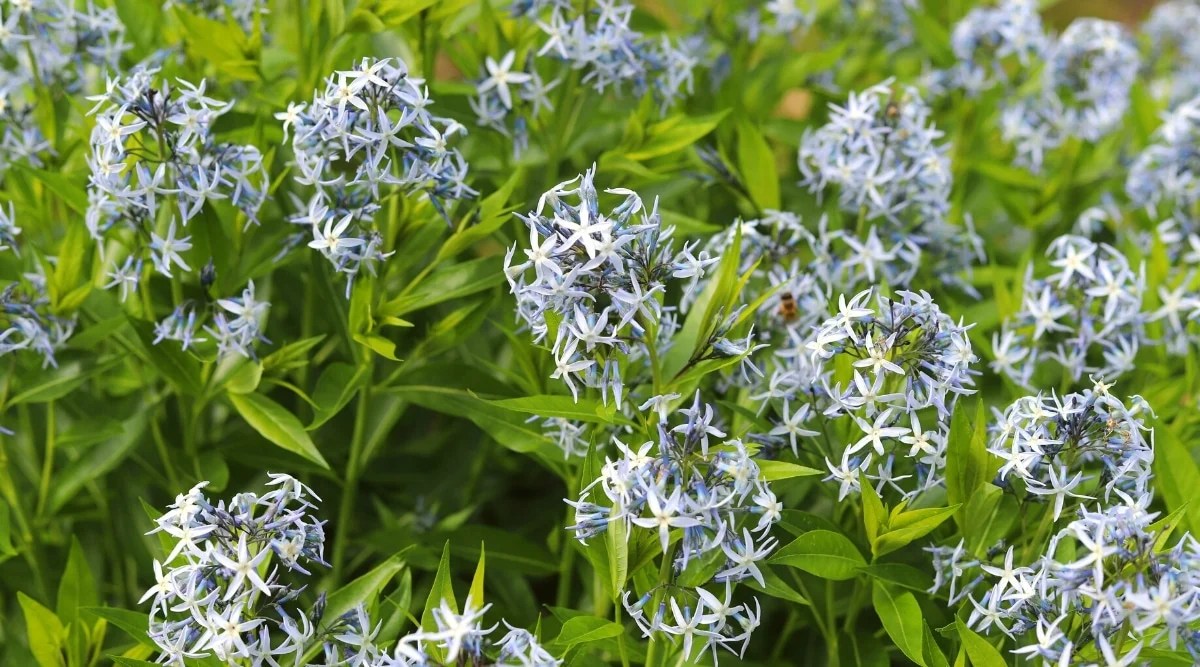
Licorice Plant
If you live in hardiness zones 9 through 11 , you could grow licorice plants as perennials . Otherwise , it ’s still worth growing as an yearbook .
This fast - produce trailing plant make an in force ground cover in a rock garden , herb garden , or xeriscape , as well as an excellent candidate for container gardening . If growing in a container , you may take cuttings in the evenfall , take root them indoors , and plant them out again the undermentioned spring .
Licorice plant life has soft , velvety leafage that are pallid green in color . Leaves are aromatic with a hint of liquorice . Flowers are small and white-hot , blooming in clusters during mid - summer , although the flowers are not particularly showy . This plant thrives in full sunlight , with medium - character well - drain soil .

Lindheimer’s Beeblossom
Lindbeimer ’s beeblossom is an herbaceous perennial that can grow rather tall and shaggy-haired . It would look at abode in a naturalized region where it can arise to its full potential difference with other native plant and wildflower .
From late summertime until mid fall , Lindheimer ’s beeblossom blooms , producing an copiousness of showy white flower that slowly fleet to pink .
Grow Lindheimer ’s beeblossom in a location with full sun . Make certain it has well - drained grunge that is sandy or loamy . This plant life germinate a prospicient taproot , making it quite tolerant of drouth , but during protracted dry patch , it still take account an occasional drink of H2O . Pruning may be desire if plants get too improbable and leggy .

Mexican Cardinal Flower
The native range of the Mexican key flower extend from southern Arizona into Mexico , making it well adapted to hot , dry climates . This flora does well in full Sunday but also likes some afternoon shade . Soil should be well - drained .
Young plants require more water , and institute plants will become more drought - resistant , though they still appreciate veritable deep watering .
Mexican central flower is a very attractive plant . It grows upright stems up to about 3 feet tall . Plants will slowly spread and can be disunite as needed or allowed to naturalize in a larger area . Stems are lined with slight , dark dark-green leaves . The real star is the bloom . Bright red tubelike peak bloom from mid to later summertime and are a favorite of hummingbird .

Mojave Sage
Mojave sage is a colorful plant that is easy to grow and tolerant of drouth and arid conditions . Plant this sage in full sunshine in an herb garden , rock garden , xeriscape , or with other perennial . It can also be turn in a container . Soil should be of ordinary timber , abject to spiritualist moisture , and well - drained .
The Mojave salvia has silvery pale green leaves that have a classifiable scent . leave-taking grow along upright stanch . These plants have a recollective bloom period and produce very showy blossom clusters all summer .
The flowers are violet - blue and develop in foresighted unsloped cluster surrounded by showy pinkish - purple bracts . The flowers draw hummingbird , butterfly , and bee .
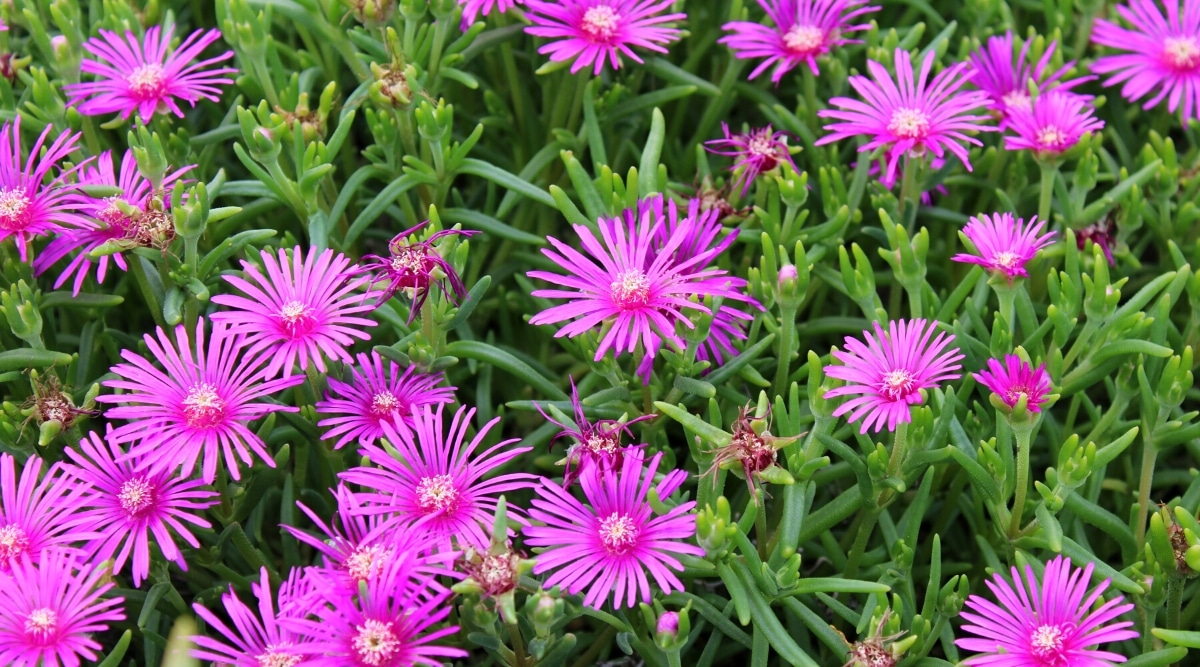
Moonshine Yarrow
There are many cultivar of yarrow . ‘ Moonshine ’ develop a dense mass of burnished chickenhearted flush from mid to late summer . The flowers are very showy and attract butterfly and other insects . Yarrowalso makes a just , long - lasting cut efflorescence .
The ‘ Moonshine ’ Achillea millefolium grows well in wry shape and full sun . Soil should be loose and well drained . This plant grows vigorously by runners , and the silverish - green fern - alike leaves make a good ground book binding . If yarrow becomes too dense , the clustering can be easily divided every few years .
Narrowleaf Evening-primrose
Narrowleaf evening primrose is a perennial wild flower native to eastern North America . Although it may be link up with bed wetter and more humid clime , it is liberal of dry grime and casual drought .
This low - maintenance industrial plant does well in full sunshine and well - drained filth . If the foliage die back after efflorescence , simply prune them back to the basal rosette , and they should regrow the following spring .
This works produces showy chicken flowers from mid - summer until downslope . Flowers are bright yellow and while each private flower is short - lived , the works produces many prime in chronological sequence over several week .

Despite its name , the narrowleaf even - primrose blooms during the daytime . works overspread over time by ego - seeding and by vegetational maturation . Overgrown clumps can be easily divided as needed .
Pink Muhlygrass
Pink muhlygrass is a veryshowy ornamental grassthat tolerate a encompassing range of conditions but prefer full sun and dry to average - moisture , well - drain grime . This plant would be a great addition to a John Rock garden , recurrent garden , xeriscape , or any sunny location in motivation of an accent grass .
From leaping until former fall , pink muhlygrass grow in a obtuse clump of foresighted , sparse , tubular , green leafage . In early fall , it shoots up a number of marvelous bloom head . The prime blossom all together create a fine pink fog across the top of the industrial plant .
A large clump or cluster of muhlygrass in full bloom is a very appealing sight . This works will regurgitate by self - seeding , and clumps can be divided and transplant if they become too with child . you’re able to also make additional clusters of muhlygrass to delight the following decline .

Poppy Mallow
Poppy mallow , also know as purple poppy mallow or winecups , is a prettynative wildflowerthat performs well in dry experimental condition . This is a great choice for a drought - patient of garden , rock garden , or native wild flower garden . Plant poppy mallow in full sun with average , dry to culture medium wet , well - drained soil .
This low-down - maintenance perennial is quite showy and worthy of care . It has deep lob , shining green leaves with slightly hirsute stems . From previous spring into early summertime , poppy mallow bursts into bloom . The flowers are very showy in a bright , deep fuschia or maroon colouring material .
Prickly Pear
There are several species of prickly pear cactus , each native to a different realm and each grow to a different height . The small varieties are low - growing and typically bide under one ft tall . The larger diverseness , however , can accomplish a thumping fifteen understructure marvelous . They all grow best in full sun and dry , farinaceous soil .
Prickly pear cactus have chummy flattened evergreen pads with an copiousness of sharp prickle . Between the obvious longer spines are clusters of petite spines that can be very painful if they become embedded in the skin .
Despite its obvious ( and not so obvious ) peril , this cactus is worthy of growing in the xeriscape landscape painting . The flowers are gravid and showy , blossom in an regalia of promising colors , let in yellow , orange , and pink .

Prickly Thrift
Prickly penny-pinching is an unusual - bet plant . It has midget , pointy , evergreen leaves . The leaves are pallid silvery immature and stay in low bunches close to the ground . In other summertime , linear spikes of little pale pinkish trumpet - regulate flowers look . A sight of prickly thrift in full peak is quite showy .
This is an first-class bunch together undercoat cover for a rock garden , xeriscape garden , or other dry border or moulding . Plant prickly thrift in a location with full sunlight and dry out to medium moisture soil . Soil should be well - drained and can be gravelly or gritty .
Purple Lovegrass
Purple lovegrass is a clump - forming ornamental grass that see great planted in multiples . A single plant give an attractive addition to the xeriscape garden , but a bunch of many flora create a spectacular autumn daze while in bloom .
The leafy green clumps of summer become hide with a dense muddy blanket of ticklish pink - tinge flowers . The industrial plant provide excellent cover for ground - dwelling bird who also scrounge for the seeds during the fall and winter month .
Plant purpleness lovegrass in full Dominicus . This plant choose dry , flaxen , or loamy soil . It can tolerate a ambit of inhospitable weather condition , including warmth , sun , and drought . This industrial plant will disperse and can be propagated by division as well as self - seeding .
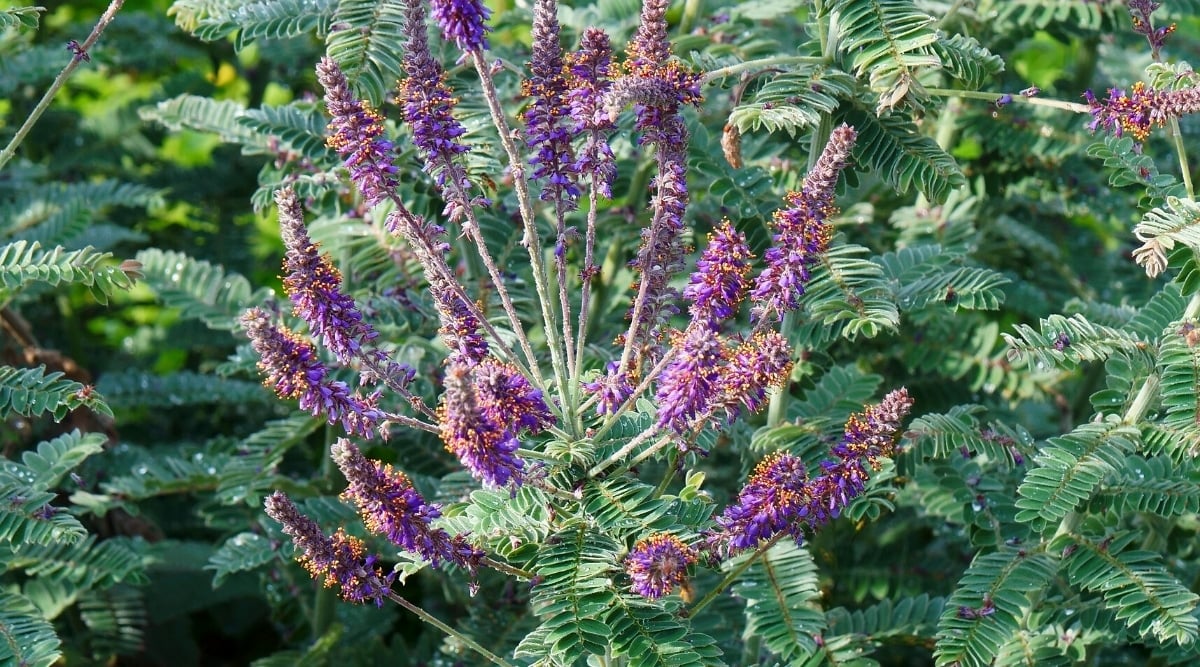
Rattlesnake Master
Rattlesnake master copy is an interesting plant to grow . It would be a wonderful plus to a xeriscape garden , rock-and-roll garden , or sundry perennials .
This flora grows a long taproot , making it hard to transplant , but well - adapt to drouth . develop rattlesnake master in full sun with average , dryish , well - drained dirt .
rattler master looks a bit like a yucca , with a rosette of long slim leave that are serrate along the edge . In mid - summertime , a grandiloquent flower straw develops , producing several spiky , dark-green - white , orblike flowers . The flowers are not gaudy in the traditional horse sense , but they are quite unique , and attract pollinators .
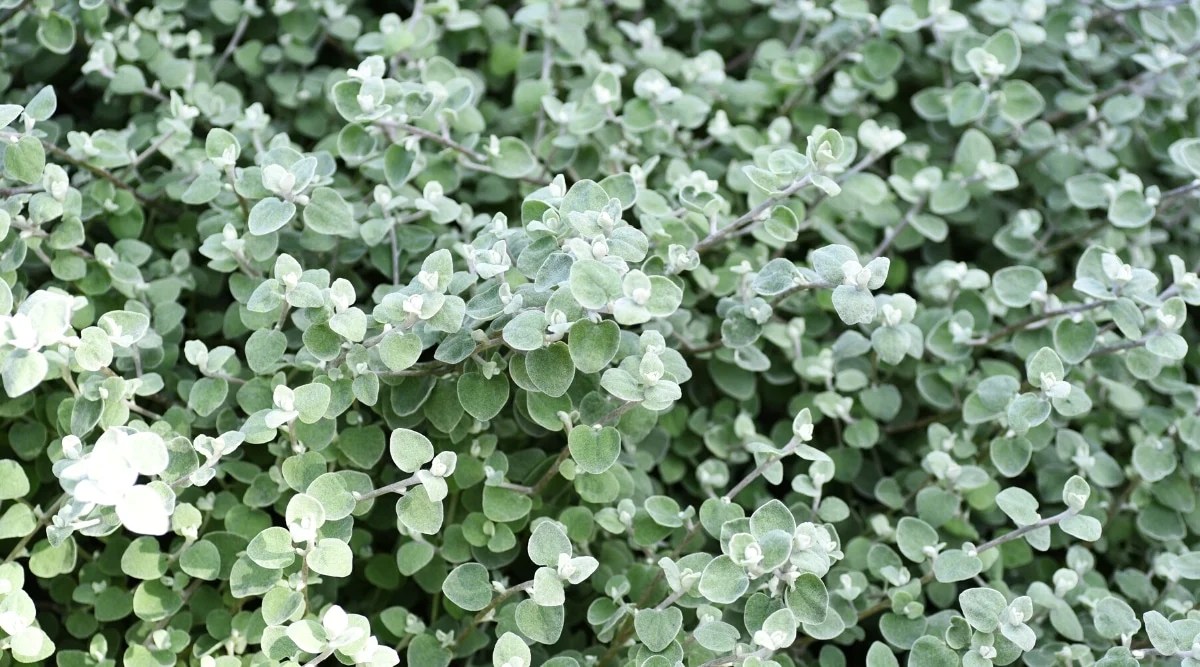
Rose Moss
Rose moss is an annual that is wide available and easy arise in ironic position . Plant it in a rock garden , along borders and border , as a temporary ground screen , or in a container . This plant does best in a location with full Lord’s Day and well - drain median - timber soils . Although it is an annual , grow moss may self - seed in favorable conditions .
Rose moss is usually used as a ground cover . Plants are vigorous and low - grow , creating a summer rug of midget dark-green leave of absence along trailing root word .
Plants bloom in other summer and continue bloom until the first frost . Flowers are very showy and do in many color , including pinkish , red , orange , yellow , and white .

Russian Sage
This herbaceous to semi - woody perennial does well in cheery , warm , ironic condition . Its fragrant leaves are resistant to cervid and cony . The fragrant blossom bloom from mid - summer until mid - fall and attract butterfly and other pollinators . Flowers uprise along tall , sprawling spikes and are minuscule but very showy , especially en masse shot , covering the plant with light purple - blue bloom .
This plant would look enceinte in any xeriscape garden , herb garden , or rock garden . Grow it along with other perennials , or uprise it in a with child container . Soil should be promiscuous and very well enfeeble .
If the plant becomes too large or scraggly looking , give it a grievous pruning in the leap to keep it more compact . Russian sage will also circularize by root suckers . These can be left to naturalize a larger expanse , divided and transplanted , or merely removed as needed .
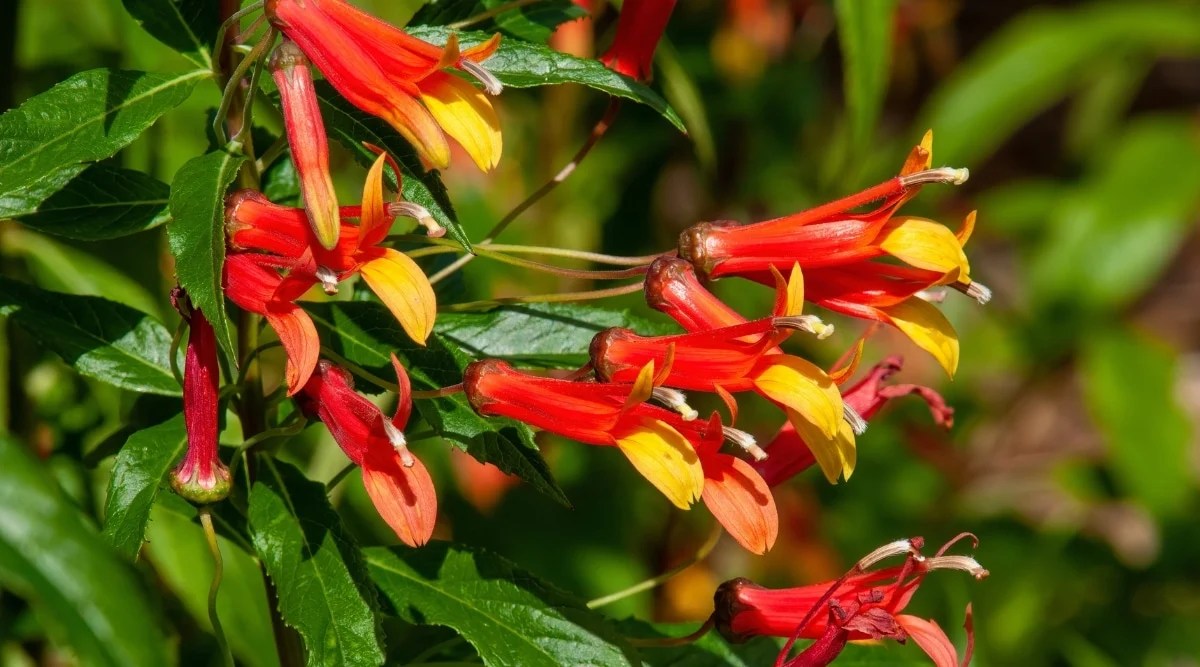
Sea Holly
The sea holly is a very interesting - look works . tumid rosettes of super spiky leaves give rise to tall flowering radical . At the top of the anthesis stems are the most strange - looking flowers . These are spiky eyeball with showy bracts that range in color from pale silvery light-green to lavender and attracts pollinators .
Not only is the sea holly enthralling to calculate at , it ’s also prosperous to mature . It does best in full sun with wry , loamy , well - drained grunge . Sea holly , like other Eryngiums , develops a deep dab root , which make it both very drought tolerant , but also unmanageable to transplant once install .
Shasta Daisy
Do n’t let the variety ‘ Snowcap ’ fool you , this shasta daisy is well adapted to red-hot and ironical conditions . Plant shasta daisy in full sun , with dry to medium moisture well - drained soil .
Shasta daisy are short - lived perennial and can also be grown as yearly . They readily reseed themselves and keep their place in the garden , even though single plants may become flat back every few years .
Shasta daisy is a grim - upkeep plant . It is resistant to browse herbivore , and the flowers attract pollinators . Blooming in the summertime month , flowers are showy , with a very traditional white daisy - same coming into court with bold yellow center .

Slender Mountain Mint
Slender lot mountain is a beautiful deal plant with slight green leaves and a sweetly minty scent . In mid - summertime , cluster of tiny whitened prime blossom , which attract numerous butterflies , bees , and other dirt ball . Because of their minty perfume , they are not bothered by deer or coney .
take a location with full Lord’s Day for these industrial plant to grow more compactly . They will tolerate light shade but will run to sprawl and get leggy . Soil should be loose and well drain . This would be a great plant for a meadow garden or other naturalized area , an herb garden , or with any low - maintenance perennial organization .
Sunset Hyssop
sundown hyssop is a beautiful plant to tot up to your xeriscape landscape . folio are fine and feathery , give it a delicate visual aspect . From mid - summertime into fall , sunset hyssop blooms with a the great unwashed of pocket-size , tubular flowers . Flowers are reddish - orangish and attract hummingbirds and a smorgasbord of worm .
Sunset hyssop thrive in a location with full Sunday and well - drained soil . This plant is well adapted to the desiccated xeriscape landscape . Sunset hyssop is leisurely - to - grow and low - upkeep . Any numb halt can be pruned to land level to keep the plant shaggy-haired and attractive .
Trumpet Vine
Although cornet vine is native to the humid southeastern United States , it does astonishingly well as part of a xeriscape garden . A well - established plant life is drought - resistant and does well in hot , wry placement . Thisperennial climbing vinehas bright orangish efflorescence .
During extended ironical periods , give it an periodic full-blooded drink of piss . The longsighted , tubular , deep orange flowers attract hummingbirds .
Trumpet vine is tolerant of many growing conditions and will spread out by underground moon-curser and self - seeding . This is also a vigorous mounting vine and demand some sort of upright social organization upon which to uprise . Trumpet vine can grow up into a tree diagram , along a fencing or paries , or over an arbor or trellis .

Turquoise Tails Blue Sedum
aquamarine tails blue sedum is a low - growing succulent ground cover . As it spreads , it form a mat of tiny greenish - blue foliage along creeping stems .
Flowers blossom in the summertime month as upright clusters of pallid yellow flowers . The flowers pull butterflies and other worm , while the plants are resistant to browsing herbivores .
Turquoise tails blue sedum grows best in a location with full sun . This plant life thrives in median - quality well - drain soil with dry to average wet . Sedum is an excellent pick for a xeriscape garden , rock garden , or along edge and edges . The leafage is attractive on its own and remains evergreen throughout the yr .

Whale’s Tongue Agave
Whale ’s tongue agave has thickset , wide , evergreen plant leave that raise in a enceinte leafy rosette . Each leafage is edged with stout spines , so be careful when handling this plant life .
The foliage is silvery green and very eye - catch . This plant can grow quite large , as much as 4 to 6 feet across at maturity , so be sure to allow it plenty of space to raise . implant it in full Sunday with average , dry , well - debilitate soil .
If you are prosperous enough to convince your hulk ’s spit agave to bloom , be prepared for a stunning pot ! The bloom stalks may maturate to 14 understructure tall and are vastly boneheaded and stalwart . This works flowers only once , between 10 and 20 years of age , and after inflorescence , the leave-taking will die . plant will reproduce by seeds and offshoot .

Wild Bergamot
uncivilized bergamot orange is an attractive native flora that is surprisingly drouth - tolerant . This plant is found course in dry prairie soils and is well adjust to full Lord’s Day and crushed body of water . It does best in an area with upright air circulation as it is prostrate to powdery mildew .
Wild Citrus bergamia is a member of the mint household and has square stems and aromatic leaves , and flowers . The blossom are cannular and pale purpleness and blossom in dense clusters . Flowers bloom from mid to recent summertime and attract many pollinator , including hummingbird and butterfly stroke .
Final Thoughts
With somany beautiful choice for drouth - broad plant , you should have no problem find some great options for your xeriscape garden . Just be sure to take plants that will execute well in your local climate zone .
All of the plants listed here will appreciate loose , well - drained soil , but do n’t forget to give them a potable of water at once after planting to help minimise transplant jounce . Enjoy selecting a variety of showy plants with a panoptic variety of growing habits , colors , and textures !










